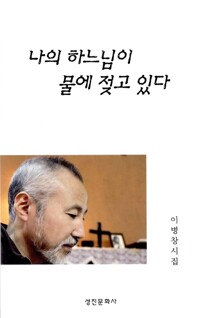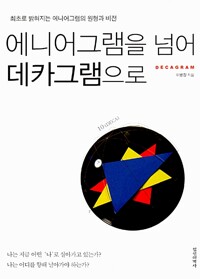Philosophy of Baruch Spinoza
Baruch Spinoza's philosophy encompasses nearly every area of philosophical discourse, including metaphysics, epistemology, political philosophy, ethics, philosophy of mind, and philosophy of science. It earned Spinoza an enduring reputation as one of the most important and original thinkers of the seventeenth century.
Samuel Shirley, who translated Spinoza's complete works into English, summed up the significance of Spinoza's philosophy as follows:
Spinoza's philosophy is largely contained in two books: the Theologico-Political Treatise, and the Ethics. The former was published during his lifetime, but the latter, which contains the entirety of his philosophical system in its most rigorous form, was not published until after his death in 1677. The rest of the writings we have from Spinoza are either earlier, or incomplete, works expressing thoughts that were crystallized in the two aforementioned books (e.g., the Short Treatise and the Treatise on the Emendation of the Intellect), or else they are not directly concerned with Spinoza's own philosophy (e.g., The Principles of Cartesian Philosophy and The Hebrew Grammar). He also left behind many letters that help to illuminate his ideas and provide some insight into what may have been motivating his views.[1][2]
Philosophy of religion[edit]
Spinoza's philosophy of religion is largely contained in the Theologico-Political Treatise. In that work he argues for the view that we should interpret scripture solely on its own terms by carefully studying it, not with any concepts or doctrines that cannot themselves be derived from the text. If we do this, he thought, it would turn out that many things we believe or are told by religious authorities about God and the universe could be shown to be false (e.g., miracles).[1] Spinoza's view is exemplified in the following sentence from the Preface to the Theological Political Treatise:
Ontological argument[edit]
In Spinoza’s Ethics, he wrote a section titled “Treating of God and What Pertains to Him,” in which he discusses God’s existence and what God is. He starts off by saying: “whether there is a God, this, we say, can be proved”.[3] His proof for God follows a similar structure as Descartes’ ontological argument. Descartes attempts to prove God’s existence by arguing that there “must be some one thing that is supremely good, through which all good things have their goodness”.[4] Spinoza’s argument differs in that he does not move straight from the conceivability of the greatest being to the existence of God, but rather uses a deductive argument from the idea of God. Spinoza says that man’s ideas do not come from himself, but from some sort of external cause. Thus the things whose characteristics a man knows must have come from some prior source. So, if man has the idea of God, then God must exist before this thought, because man cannot create an idea of his own imagination.[3]
Substance of God[edit]
After stating his proof for God’s existence, Spinoza addresses who “God” is. Spinoza believed that God is “the sum of the natural and physical laws of the universe and certainly not an individual entity or creator”.[5] Spinoza attempts to prove that God is just the substance of the universe by first stating that substances do not share attributes or essences, and then demonstrating that God is a “substance” with an infinite number of attributes, thus the attributes possessed by any other substances must also be possessed by God. Therefore, God is just the sum of all the substances of the universe.[6] God is the only substance in the universe, and everything is a part of God. “Whatever is, is in God, and nothing can be or be conceived without God”.[3] This concept of God is very similar to the Advaita Vedanta of Hinduism [1] This view was described by Charles Hartshorne as Classical Pantheism.[7] Spinoza has also been described as an "Epicurean materialist",[8] specifically in reference to his opposition to Cartesian mind-body dualism. This view was held by Epicureans before him, as they believed that atoms with their probabilistic paths were the only substance that existed fundamentally.[9][10] Spinoza, however, deviated significantly from Epicureans by adhering to strict determinism, much like the Stoics before him, in contrast to the Epicurean belief in the probabilistic path of atoms, which is more in line with contemporary thought on quantum mechanics.[9][11]
Political philosophy[edit]
Spinoza's political philosophy is deeply influenced by both the turbulent time period in which he lived, and by the fact that he happened to live in a comparatively liberal place in Europe, which allowed him freedoms he wished to preserve and defend, as he says in the Preface to the Theological Political Treatise:
Spinoza's political philosophy is scattered in three books, the Theologico-political Treatise, the Ethics and the Political Treatise. A first look at its main principles could bring the uninformed reader to believe that it is the same as Hobbes's. Yet both theories differ in their conclusions. Spinoza's political philosophy is also a philosophy of the conatus, the individual tendency to exist, which cannot be brought to extinction even in the most powerful Leviathan, even in the worst of authoritarian regimes. Every individual, in Spinoza's opinion, has a natural right. This right includes everything that he desires and he is able to obtain. As a result, my own natural right is the equivalent of my individual strength or power.[12] Hence, in Spinoza's political philosophy subjective rights (e.g. human rights) do not exist by nature, they are an institution of society, they only exist in the civil state. Moreover, according to Spinoza the notions of right and wrong have no meaning before society, since in the natural state there are no common norms, only individual desires (desires which can bring some people to dominate other weaker people).
How can civil society exist if people are only dominated by their own impulse to live? Through many ways. First, through the action of affections, the same ones that are described in the Ethics.[13] Those affections, my feelings, will bring me to cluster, to gather with people similar to myself: this similarity reinforces the feeling or representation of my own existence. In a similar fashion, human needs will also play a role: society, through distribution and specialisation of each task, can provide more goods than I can generate myself and with less effort. This is why the sciences and the arts can only develop in societies, where there is time to attend to things other than one's own survival.[14] This fear, the need to constantly look after danger and threats and to live in constant tension, is the third cause or root phenomenon of society. Society brings me protection and security. We see hence that Spinoza, while incorporating in his work Hobbesian arguments (the argument of fear), develops a distinct analysis that will bring him to different conclusions: the need of a free society.
Here individuals never entirely renounce their individual right of nature. If in the Theologico-Political Treatise Spinoza refers to the notion of a pact that would be at the root of civil society, this notion disappears in the Political Treatise. People are not brought to form a society by their free will, but rather by their affections, or domination (a great number of individuals gathered through the authority of an unusually strong or charismatic man could also be a way to explain the birth of civil society). They are not passive subjects under the power of an absolute sovereign, but rather citizens that bring their own strength to the State. The power of the state exists in Spinoza's opinion only through the gathering of individual powers, powers which the society incorporates and can even develop if its political institutions are well designed.[15] "Well designed" means that they must induce political leaders to act according to the rules, by their own will. In Spinoza's political philosophy, state is not opposed to the society but it is the apparatus that gives a certain form or existence to the society, to a gathering of human beings.[16] It is not transcendent to it, as it is in Hobbes's philosophy.
These affirmations have some political implications. Here, individual rights exist only because we, as individuals, benefit from the power of our entire group. Members' rights are guaranteed by the strength of their political group (=State or imperium). Individual or subjective rights do not exist outside of a state, out of an organised society. But that doesn't mean that the government should have absolute power over us. To understand that well, we have to remember that according to Spinoza the government or society (there is no difference between them) are nothing else and do not exist without the individual conatuses of the individuals that are gathered in social entities. Individuals hold a part of their natural right in the civil state. They cannot restrain themselves from judging about the state of things as they wish, and any action that would go against this tendency can induce social unrest. It follows that the state must restrain itself from any action that could jeopardise its own integrity, as condemning determinate opinions can.[17] In a broader perspective, a state that relies on fearsome and inhuman ways to preserve its power cannot survive for long, since those ways impede the development of its own strength, and reinforce the tendency of the multitudo, the masses, to unrest or to disobedience: obedience is necessary to preserve social order and peace.
Thus, we can distinguish Hobbes and Spinoza through the way they see the normal operation of the state. For Hobbes, the object of the state is to preserve peace through security and fear if needed. According to Spinoza, that kind of peace would not be a true peace but only the absence of unrest. True peace implies a state of things where individuals can accomplish and realise their potentialities, where there is a minimum peace of mind. This is why Spinoza favors states that are organised so that citizens can participate in the elaboration of laws, as a way to improve their quality, and in the operation of the state.
The vocabulary of Spinoza shows a modification of the way philosophers see politics compared to the Antiquity.[18] In Plato's and Aristotle's works good politics imply good government (defined as the way decisions are taken in a certain political community), in the sense that the different types of government can be ranked according to their virtues (aristocracy is better than democracy, which is better than oligarchy and tyranny according to Plato, and so on). Spinoza goes beyond this way of seeing things. There is not a better government in this sense: the better government is the government that the people of a certain country have been accustomed to, and there is no good in changing it: such a change alters the balance of power already in place and can bring unrest, conflict between opposed or entrenched interests. According to him, one should rather aim to design better institutions: for type of regime or government (Monarchy, Aristocracy, Democracy) Spinoza implements the outlines of what should be the good institutions for this regime. For example, in Monarchy there should be an official Council of the king, whose members are chosen formally, and whose opinions form a set of possible decisions for the king.[19] This is a way of avoiding the issue of the king's secret counselors or ministers, who have a lot of influence on the king and often are the true decision takers. This system makes public and transparent through a formal process a matter of fact, the existence of a circle of advisers around the king.
For further reference, see Spinoza's Political Philosophy.[20]
Philosophy of mind/psychology[edit]
The human mind[edit]
Spinoza argues for a distinct conception of the human mind in Part Two of The Ethics. He says the following:
He then argues that it follows that "the human Mind is a part of the infinite intellect of God."(E2P11c)[21] Further, Spinoza says: "Whatever happens in the object of the idea constituting the human Mind must be perceived by the human Mind"(E2P12)[21] From this we get a clear rejection of Descartes' mind/body dualism: "The object of the idea constituting the human Mind is the Body, or a certain mode of Extension which actually exists, and nothing else."(E2P13)[21]
The emotions[edit]
One thing which seems, on the surface, to distinguish Spinoza's view of the emotions from both Descartes' and Hume's pictures of them is that he takes the emotions to be cognitive in some important respect. Jonathan Bennett claims that "Spinoza mainly saw emotions as caused by cognitions. [However] he did not say this clearly enough and sometimes lost sight of it entirely."[22] Spinoza provides several demonstrations which purport to show truths about how human emotions work. The picture presented is, according to Bennett, "unflattering, coloured as it is by universal egoism"[23] Spinoza's treatment of the emotions in Part Three of The Ethics, "On the Origin and Nature of the Affects", utilizes a broad set of terminology, clearly intended to cover the whole of human experience. He tells us in the Preface:
Human freedom[edit]
Whether there is any meaningful kind of freedom which humans may genuinely have is, in Spinoza's picture, at least contentious. He certainly claims that there is a kind of freedom, namely, that which is arrived at through adequate knowledge of God, or, what is the same: the universe. But in the last two propositions of Part Two of The Ethics, P48 and P49, he explicitly rejects the traditional notion of free will. In E2P48, he claims:
So from this we get a strong sense of Spinoza's metaphysical naturalism, that is, that the natural and human orders are contiguous. With that being the case, human freedom of a kind which would extricate us from the order of physical causes is impossible. However, Spinoza argues, we still ought to strive to understand the world around us, and in doing so, gain a greater degree of power, which will allow us to be more active than passive, and there is a sense in which this is a kind of freedom.[21] For more, see: Stanford.edu
Metaphysics[edit]
Spinoza's metaphysics consists of one thing, substance, and its modifications (modes). Early in The Ethics Spinoza argues that there is only one substance, which is absolutely infinite, self-caused, and eternal. He calls this substance "God", or "Nature". In fact, he takes these two terms to be synonymous (in the Latin the phrase he uses is "Deus sive Natura"). For Spinoza the whole of the natural universe is made of one substance, God, or, what's the same, Nature, and its modifications (modes).
Substance[edit]
Spinoza defines "substance" as follows:
This means, essentially, that substance is just whatever can be thought of without relating it to any other idea or thing. For example, if one thinks of a particular object, one thinks of it as a kind of thing, e.g., x is a cat. Substance, on the other hand, is to be conceived of by itself, without understanding it as a particular kind of thing (because it isn't a particular thing at all).
Attributes[edit]
Spinoza defines "attribute" as follows:
From this it can be seen that attributes are related to substance in some way. It is not clear, however, even from Spinoza's direct definition, whether, a) attributes are really the way(s) substance is, or b) attributes are simply ways to understand substance, but not necessarily the ways it really is. Spinoza thinks that there are an infinite number of attributes, but there are two attributes for which Spinoza thinks we can have knowledge. Namely, thought and extension.[25]
Thought[edit]
The attribute of thought is how substance can be understood to give rise to thoughts, or thinking things. When we understand a particular thing in the universe through the attribute of thought, we are understanding the mode as an idea of something (either another idea, or an object).
Extension[edit]
The attribute of extension is how substance can be understood to be physically extended in space. Particular things which have breadth and depth (that is, occupy space) are what is meant by extended. It follows from this that if substance and God are identical, on Spinoza's view, and contrary to the traditional conception, God has extension as one of His attributes.
Modes[edit]
Modes are particular modifications of substance, i.e., particular things in the world. Spinoza gives the following definition:
Substance monism[edit]
The argument for there only being one substance in the universe occurs in the first fourteen propositions of The Ethics. The following proposition expresses Spinoza's commitment to substance monism:
Spinoza takes this proposition to follow directly from everything he says prior to it. Spinoza's monism is contrasted with Descartes' dualism and Leibniz's pluralism. It allows Spinoza to avoid the problem of interaction between mind and body, which troubled Descartes in his Meditations on First Philosophy.
Causality and modality[edit]
The issue of causality and modality (possibility and necessity) in Spinoza's philosophy is contentious.[26] Spinoza's philosophy is, in one sense, thoroughly deterministic (or necessitarian). This can be seen directly from Axiom 3 of The Ethics:
Yet Spinoza seems to make room for a kind of freedom, especially in the fifth and final section of The Ethics, "On the Power of the Intellect, or on Human Freedom":
So Spinoza certainly has a use for the word 'freedom', but he equates "Freedom of Mind" with "blessedness", a notion which is not traditionally associated with freedom of the will at all.
The principle of sufficient reason (PSR)[edit]
Though the PSR is most commonly associated with Gottfried Leibniz, it is arguably found in its strongest form in Spinoza's philosophy.[27] Within the context of Spinoza's philosophical system, the PSR can be understood to unify causation and explanation.[28] What this means is that for Spinoza, questions regarding the reason why a given phenomenon is the way it is (or exists) are always answerable, and are always answerable in terms of the relevant cause(s). This constitutes a rejection of teleological, or final causation, except possibly in a more restricted sense for human beings.[21][28] Given this, Spinoza's views regarding causality and modality begin to make much more sense.
Parallelism[edit]
Spinoza's philosophy contains as a key proposition the notion that mental and physical (thought and extension) phenomena occur in parallel, but without causal interaction between them. He expresses this proposition as follows:
His proof of this proposition is that:
The reason Spinoza thinks the parallelism follows from this axiom is that since the idea we have of each thing requires knowledge of its cause, this cause must be understood under the same attribute. Further, there is only one substance, so whenever we understand some chain of ideas of things, we understand that the way the ideas are causally related must be the same as the way the things themselves are related, since the ideas and the things are the same modes understood under different attributes.
Epistemology[edit]
Spinoza's epistemology is deeply rationalist. That is, unlike the empiricists who rejected knowledge of things as they are in themselves (in favour of knowledge merely of what appears to the senses), to think we can have a priori knowledge, knowledge of a world external from our sense perceptions, and, further, that this is tantamount to knowledge of God.[21] The majority of Spinoza's epistemological claims come in Part Two of The Ethics.
Truth and falsity[edit]
Spinoza's notions of truth and falsity have to do with the relation between ideas and their objects. He thinks that:
Adequate and inadequate ideas[edit]
From this it is clear that the notions of adequate and inadequate ideas are important for understanding how Spinoza's view works. This may be explained in the following way. Spinoza argues that "All ideas, insofar as they are related to God, are true."(E2P32)[21] Since by "God", he means the one substance which exists necessarily and absolutely infinitely, it follows that an idea as it is with no reference to knowledge a particular person has, is necessarily true, since it just is a particular instance of God. (E2P32)[21]
On the other hand, Spinoza argues: "All ideas are in God; and, insofar as they are related to God, are true, and adequate. And so there are no inadequate or confused ideas except insofar as they are related to the singular Mind of someone."(E2P36d).[21] That is, even though ideas considered objectively as elements of the universe are always adequate (meaning their relation to their object is total), when a particular individual has an idea of something, such an idea is necessarily incomplete, and therefore, inadequate. This is the source of falsehood.
Three kinds of knowledge[edit]
Spinoza discusses the three kinds of knowledge in E2P40s2.[note 2]
The first kind of knowledge[edit]
Spinoza thinks there are two ways we can have the first kind of knowledge:
- From random experience: "from singular things which have been represented to us through the senses in a way that is mutilated, confused, and without order for the intellect; for that reasons I have been accustomed to call such perceptions knowledge from random experience."[21]
- From imagination: "from signs, e.g., from the fact that, having heard or read certain words, we recollect things, and form certain ideas of them, which are like them, and through which we imagine the things."[21]
He calls these two ways "knowledge of the first kind, opinion or imagination."[21]
The second kind of knowledge[edit]
Spinoza argues that the second kind of knowledge arises:
He goes on to explain what this means in the propositions which immediately follow.
The third kind of knowledge[edit]
This can be referred to as Intuition, but it means something rather technical for Spinoza. The third kind of knowledge is a particularly important part of Spinoza's philosophy because it is what he thinks allows us to have adequate knowledge, and therefore know things absolutely truly. As he says:
Ethics[edit]
Spinoza's ethical views are deeply tied to his metaphysical system. This is evident from the following claim:
It is also apparent from this that he is a kind of subjectivist about moral values. That is, he does not take good and evil to be real properties/facts in the objects we attribute them to, but rather, they are simply thoughts we have about the comparative value of one thing to another for a particular person.
"Good" and "Evil"[edit]
Spinoza gives the following definitions of "Good", and "Evil":
From this it is clear that Spinoza's view of moral value is in some sense instrumental. That is, the goodness or badness of a particular object or action is measured not by some essential property. The emphasis on "essential knowledge" is important, given Spinoza's view of what epistemic certainty amounts to, i.e., adequate knowledge of God (a notion which is briefly elaborated on in this article).
Blessedness[edit]
Spinoza's notion of blessedness figures centrally in his ethical philosophy. Blessedness (or salvation or freedom), Spinoza thinks,
And this means, as Jonathan Bennett explains, that "Spinoza wants "blessedness" to stand for the most elevated and desirable state one could possibly be in."[29] Here, understanding what is meant by 'most elevated and desirable state' requires understanding Spinoza's notion of conatus (read: striving, but not necessarily with any teleological baggage) and that "perfection" refers not to (moral) value, but to completeness. Given that individuals are identified as mere modifications of the infinite Substance, it follows that no individual can ever be fully complete, i.e., perfect, or blessed. Absolute perfection, is, as noted above, reserved solely for Substance. Nevertheless, mere modes can attain a lesser form of blessedness, namely, that of pure understanding of oneself as one really is, i.e., as a definite modification of Substance in a certain set of relationships with everything else in the universe. That this is what Spinoza has in mind can be seen at the end of the Ethics, in E5P24 and E5P25, wherein Spinoza makes two final key moves, unifying the metaphysical, epistemological, and ethical propositions he has developed over the course of the work. In E5P24, he links the understanding of particular things to the understanding of God, or Substance; in E5P25, the conatus of the mind is linked to the third kind of knowledge (Intuition). From here, it is a short step to the connection of Blessedness with the amor dei intellectualis ("intellectual love of God").
See also[edit]
Notes[edit]
- ^ Citations of The Ethics in this article will be of this form. E2P11 refers to Ethics, Part Two, Proposition 11. The letters 'P', 'D', and 'A' refer to proposition, definition, and axiom, respectively. The letters 'd', 's', or 'c', which may occur after the proposition number, refer to demonstrations, scholia, or corollaries, respectively. This is roughly the academic standard for citation of Spinoza's work. It has the practical advantage of being translation/edition neutral.
- ^ All quotations in this section are from E2P40s2
References[edit]
- ^ a b c d e Shirley, Samuel (2002). Complete Works. Hackett.
- ^ Stanford.edu
- ^ a b c Spinoza, B. (2002). Complete Works (S. Shirley & M. L. Morgan, Eds.). Indianapolis, IN: Hackett Publishing Company.
- ^ Nolan, L. (2001, June 18). Descartes' Ontological Argument.
- ^ Cannon, J. A. (2009, May 17). World in time of upheaval: Sources of enlightenment. Deseret News.
- ^ Nadler, S. (2001, June 29). Baruch Spinoza.
- ^ Charles Hartshorne and William Reese, "Philosophers Speak of God", Humanity Books, 1953 ch. 4
- ^ Harold Bloom (16 June 2006). "Deciphering Spinoza, the Great Original – Book review of Betraying Spinoza. The Renegade Jew Who Gave Us Modernity by Rebecca Goldstein". The New York Times. Retrieved 8 September 2009.
- ^ a b Konstan, David (2016). Zalta, Edward N. (ed.). The Stanford Encyclopedia of Philosophy. Metaphysics Research Lab, Stanford University. Retrieved 21 February 2017 – via Stanford Encyclopedia of Philosophy.
- ^ Ethics, Part IV, preface: "Deus seu Natura".
- ^ "Baruch Spinoza, "Human Beings are Determined"". Lander.edu. Retrieved 21 February 2017.
- ^ Theologico-political Treatise, Chap. XVI. See also Political Treatise, Chap. II.
- ^ See Ethics, Part III & IV.
- ^ See the Theologico-Political Treatise, Chapter III
- ^ Alexandre Matheron, Individu et Communauté chez Spinoza
- ^ Political Treatise, Chap. III.
- ^ Theologico-political Treatise, Chapter XX. Political Treatise, Chapters III & V.
- ^ Pierre-François Moreau, Spinoza. Etat et religion.
- ^ Spinoza, Chapitre VII
- ^ Stanford.edu
- ^ a b c d e f g h i j k l m n o p q r s t u v w x y z aa ab ac ad ae Curley, Edwin M. (1985). The Collected Works of Spinoza. Princeton University Press.
- ^ Bennett, Jonathan (1984). A Study of Spinoza's Ethics. Hackett., pg. 276.
- ^ Bennett, Jonathan (1984). A Study of Spinoza's Ethics. Hackett., pg. 277.
- ^ Della Rocca, Michael. (2008). Spinoza. Routledge., pg. 33.
- ^ Stanford.edu
- ^ Stanford.edu
- ^ Della Rocca, Michael. (2008). Spinoza, Routledge.
- ^ a b Della Rocca, Spinoza, 2008.
- ^ Bennett 1984, pg. 371
- ^ See: Antonio Damasio Looking for Spinoza, pg. 19. "Spinoza's remains are not really inside the tomb...his body was stolen, no one knows by whom, sometime after the burial when the corpse lay inside the church..."
Further reading[edit]
- Jonathan Bennett, A Study of Spinoza's Ethics, Indianapolis: Hackett, 1984.
- Edwin M. Curley, Behind the Geometrical Method. A Reading of Spinoza's Ethics, Princeton: Princeton University Press, 1988.
- Michael Della Rocca, Spinoza, New York: Routledge, 2008.
- Steven Nadler, Spinoza's Ethics: An Introduction, Cambridge: Cambridge University Press, 2006.

















